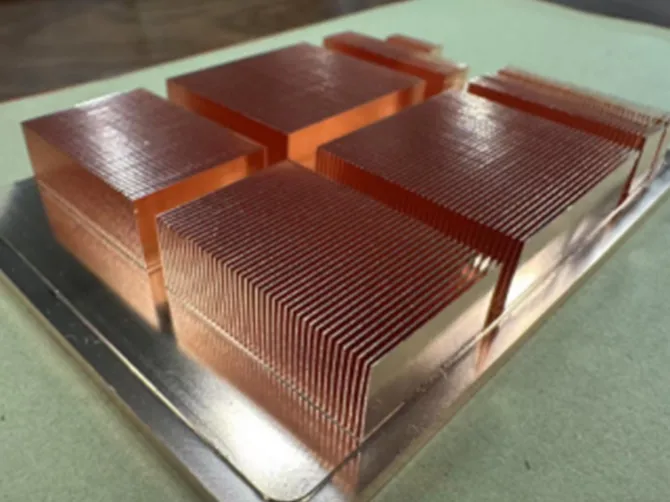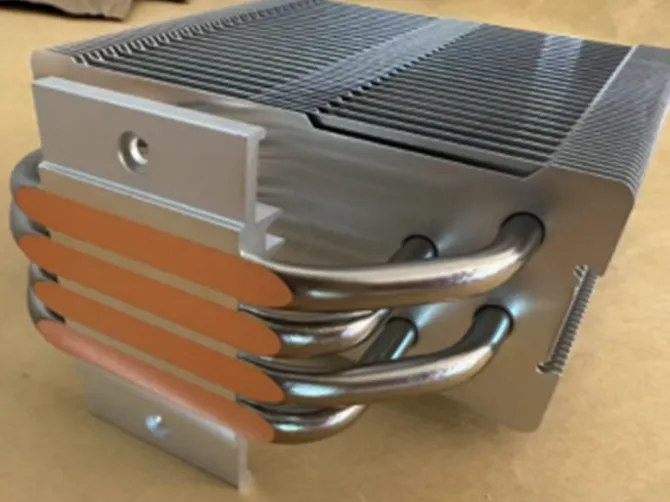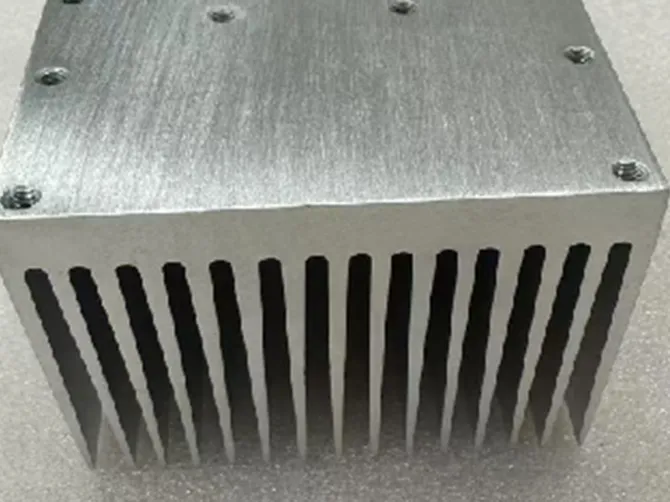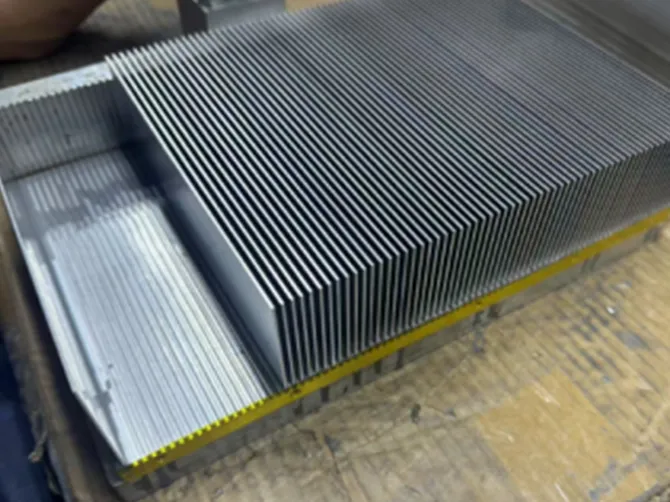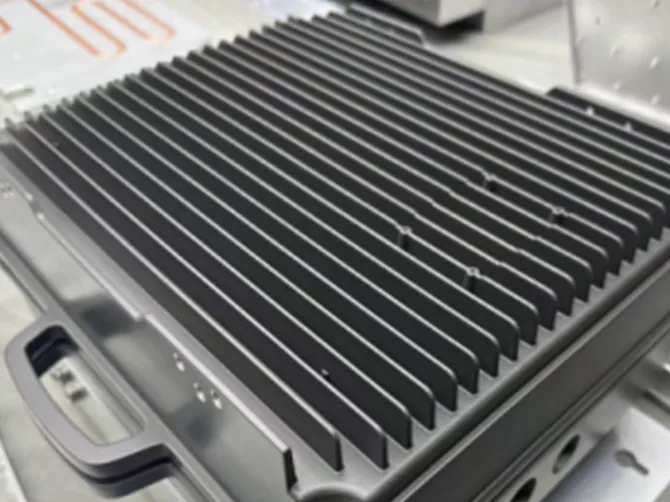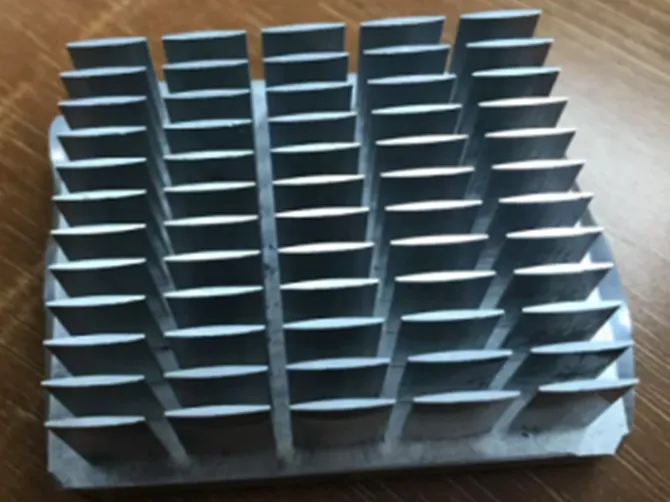Heat sinks
offer thermal management solutions and products across various fields for our customers. In some specialized areas, our technical expertise and capabilities enable us to effectively solve numerous problems for our clients.
What is a heat sink?
When an electronic component generates heat, the heat sink comes into direct contact with it. Heat is transferred from the heating element to the radiator through conduction. Metals with high thermal conductivity, such as aluminum and copper, are often used to manufacture heat sinks. This allows heat to be quickly absorbed and spread throughout the entire heat sink.
The heat sink design has a large surface area, usually in the form of fins. When the heated surface of the heat sink heats up the surrounding air, air molecules gain energy, their density decreases, and they rise. Then, cooler air will move over and replace the rising hot air. This process of air circulation enhances the convection effect, which can significantly improve the heat dissipation rate and help maintain electronic components at a safe operating temperature.This is a heat sink, a device used to lower the internal temperature of electronic components.
How to design a heat sink?
When designing a heat sink, there are many issues to consider, among which the following are important parameters to consider
Heat dissipation requirements
Clearly define the power, heat generation, and maximum allowable operating temperature parameters of the equipment or components that require heat dissipation, in order to determine the required heat dissipation capacity of the heat sink.
Space limitations
Consider the size and shape of the space where the heat sink is installed to ensure that the designed radiator can be installed and adapted properly in the equipment.
Environmental conditions
Understand the temperature, humidity, and other conditions of the usage environment in order to select appropriate materials, heat dissipation methods, and surface treatment for the heat sink.
How to choose the correct heat dissipation method?
When designing a heat sink, it is very important to consider its power and determine the design method based on the power. Among them, natural convection heat sink, forced air heat sink, and liquid cooling plate are the three most basic heat dissipation methods.
Natural convection heat dissipation
Suitable for situations with low heat generation, space allowance, and strict noise requirements, relying on natural air flow to take away heat. Radiators are usually designed with large heat dissipation areas and fins. This type of heat sink is usually produced through die-casting and cold forging processes, similar to LED lighting. Mainboard chips below 10W use this natural convection heat dissipation method.
Forced air cooling for heat dissipation
If the thermal power of the system or chip is relatively high, generally greater than 50W, natural convection cannot meet the heat dissipation performance. Therefore, it is necessary to increase the fan to force air flow, use the air flow to take away the heat on the surface of the heat sink, and achieve the goal of reducing the temperature of the chip, which can significantly improve the heat dissipation efficiency. The two factors generally considered are the specifications and parameters of the radiator and fan, and the optimizatio.n design of both is the perfect solution.
Liquid cooling plate heat dissipation
Due to the high power density of chips, traditional heat dissipation methods cannot meet the heat dissipation requirements. Therefore, an efficient liquid cooling plate is needed to solve this heat problem. Heat is carried away through liquid circulation, which has high heat dissipation efficiency and is suitable for high heat generation equipment. However, the system is relatively complex and the cost is high. This requires comprehensive consideration and design of the optimal solution. Walmate has a team of senior engineers who can provide customers with the best design solution.
How to calculate the heat dissipation capacity of a heat sink?
It can be calculated through the heat balance formula, such as Q = h*A*Delta T, where Q is the heat dissipation amount, h is the surface heat transfer coefficient, A is the heat dissipation area, and \Delta T is the temperature difference between the surface of the heat sink and the environment. It can also be calculated by determining the thermal resistance. The smaller the thermal resistance, the stronger the heat dissipation capacity, and the thermal resistance R=Delta T/Q.But there are some Other influencing factors for the heat sink.
Material properties: Different materials have different thermal conductivities. Materials with high thermal conductivity, such as copper and aluminum, have better heat dissipation performance. The thermal conductivity of copper is approximately 401W/(m\cdot K), and that of aluminum is approximately 237W/(m\cdot K). When selecting the material of the radiator, factors such as cost and weight need to be comprehensively considered.
Air flow conditions: The air flow velocity has an important impact on the convective heat dissipation of the radiator. In the case of forced convection, the air flow velocity is high, the surface heat transfer coefficient h increases, and the heat dissipation performance is enhanced. In the case of natural convection, factors such as the installation position of the radiator and the surrounding space will affect the natural flow of air, thereby affecting the heat dissipation effect.
Structural design of the radiator: Reasonable structural design can improve the heat dissipation performance. Parameters such as the shape, spacing, and height of the fins will affect the heat dissipation area and air flow. A pin-fin radiator has a larger heat dissipation area than a flat-fin radiator under the same volume, but the air flow resistance may also be greater. It is necessary to find the best balance point through optimized design.

